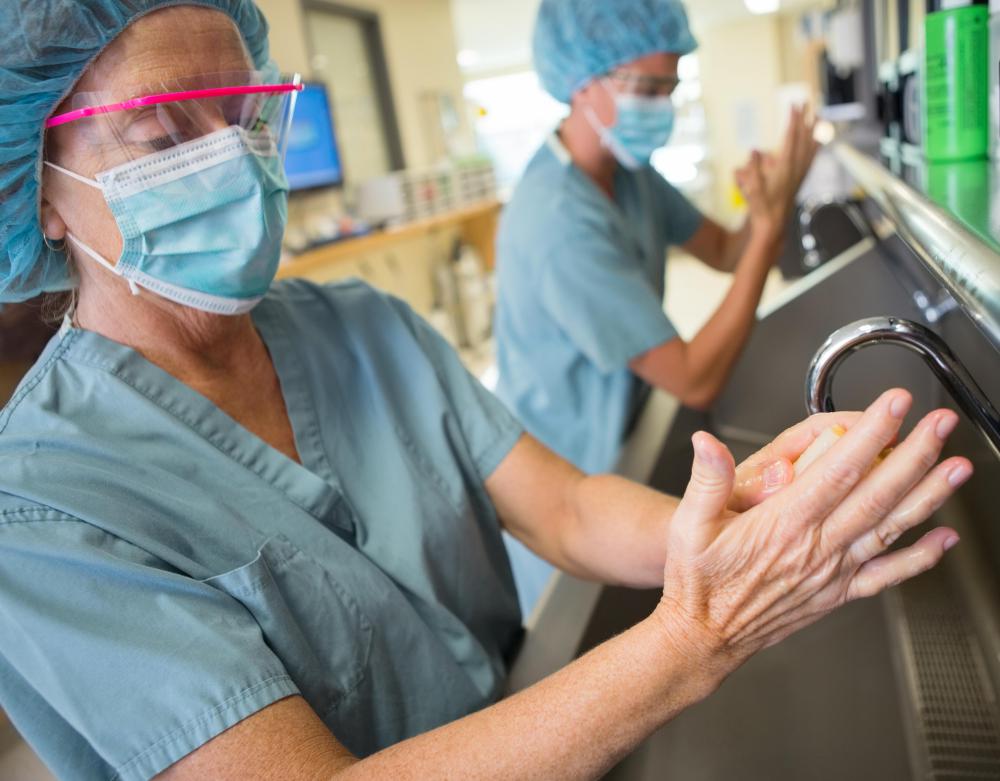At TheHealthBoard, we're committed to delivering accurate, trustworthy information. Our expert-authored content is rigorously fact-checked and sourced from credible authorities. Discover how we uphold the highest standards in providing you with reliable knowledge.
What is a Bladder Repair?
Bladder repair is a surgical procedure used to alleviate symptoms associated with bladder prolapse, or a cystocele. The procedure involves the repositioning of the bladder to its natural position and the reinforcement of the vaginal wall to prevent cystocele recurrence. As with any surgical procedure, there are risks associated with bladder repair and these should be discussed with a qualified health care provider prior to pursuing this elective treatment option.
A cystocele is a condition caused by a weakening of the supportive tissues between a woman's vaginal wall and bladder. The weakened tissue allows for the bladder to protrude into the vagina. Women who have given birth vaginally may experience a weakening of the vaginal wall due to the muscle strain associated with delivery. Straining associated with repeated heavy lifting, constipation, and obesity may also contribute to the development of a cystocele.

Surgery on the bladder is often conducted to alleviate symptoms associated with a variety of conditions resulting from bladder prolapse. A woman whose bladder is causing vaginal pressure, urinary incontinence, or impairing her ability to urinate may pursue bladder repair surgery as a treatment option. In instances where stress urinary incontinence, or an involuntary leakage of urine, is occurring, additional tests may be performed to determine the appropriate method of treatment. Frequent bladder infections, painful intercourse, and an incomplete emptying of the bladder may also be symptoms indicative of a prolapsed bladder.

Requiring the use of a local anesthetic, the procedure is a minimally invasive surgery that involves the repositioning of the bladder to its natural position. Conducted through small incisions in the vaginal wall, the bladder is moved back into its normal position and sutures are put into the tissue between the bladder and vaginal wall. The sutures serve to reinforce the wall of the vagina to prevent cystocele recurrence. A mesh-like material may be utilized to further reinforce the vaginal wall.

Prior to the bladder repair procedure, the individual should tell her doctor of all the medications and supplements she is currently taking. At least three days prior to surgery, the individual may be asked to discontinue any aspirin regimen or any other medications that inhibit the blood clotting process. Following surgery, a Foley catheter may be used for up to two days to drain the bladder of urine and, in some cases, may temporarily remain in place following the individual's discharge from the hospital. Normal urinary function generally returns in as little as two weeks, and normal activities may be resumed without restriction within six weeks.

As with any surgical procedure, there are risks associated with the repair surgery. General risks may include infection, excessive bleeding, and breathing difficulty. Complications specifically associated with bladder repair may include vaginal prolapse and damage to the bladder or vagina.
AS FEATURED ON:
AS FEATURED ON:




















Discuss this Article
Post your comments